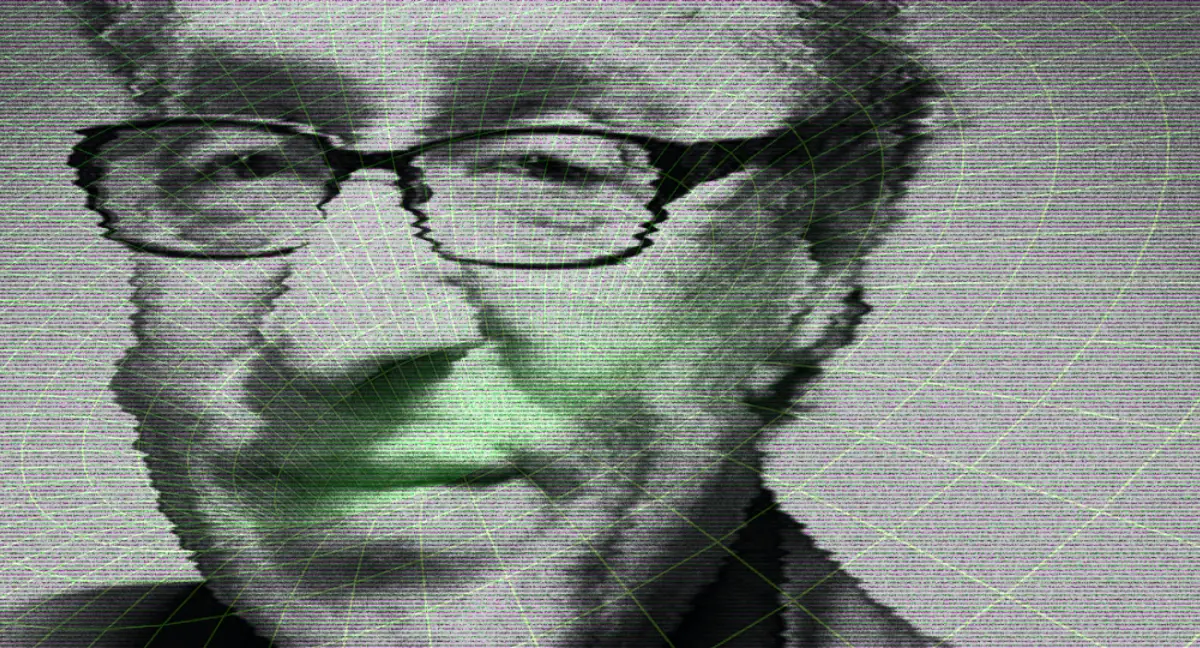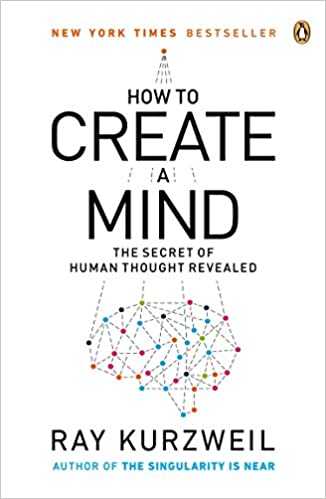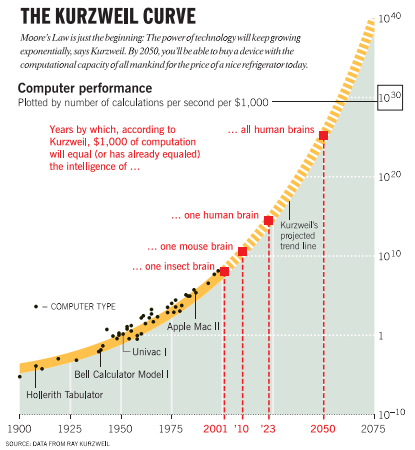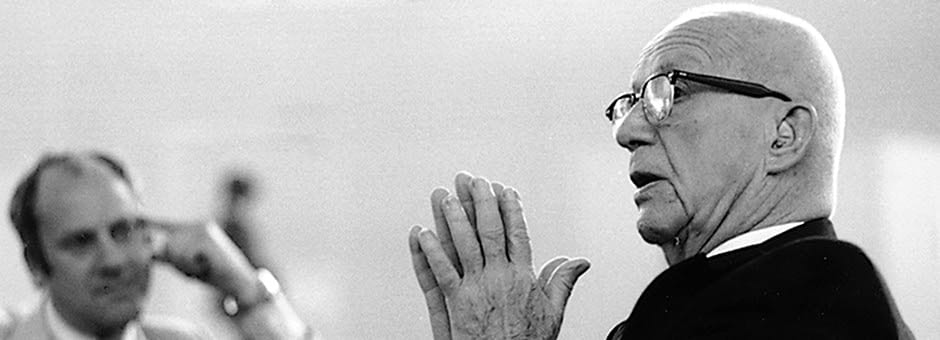Legendary Futurist Predictions lead to Breakthroughs of Neuroscience and Sound
Ray Kurzweil’s infamous predictions have propelled him to a cultural status of technological muse. In our fast-thinking, always-upgrading culture, Kurzweil stands atop the steepest incline of progress, emanating the most mind-boggling visions of “that’s our future.”
In 1990, Kurzweil predicted that within eight years, a machine would beat a human in chess. In 1997, the IBM computer, Deep Blue, beat chess’ world-champion, Garry Kasparov. At the turn of the century, Kurzweil predicted a ubiquitous internet mesh of data servers without individualized hardware. By the 2010s, major tech giants pooled their resources into cloud computing.
The list is extensive, with Kurzweil self-assigning himself an 86% accuracy for his premonitions.
Predicting the future is actually the primary reason that we have a brain.
Although the media spotlights his futuristic premonitions, they are merely the most vocal aspect of a diverse output. While his visions peer outwards into the unrealized, Kurzweil’s career is solidly planted in modern enhancements for humanity. As an inventor, he created the first text-to-speech synthesizer, the first CCD image scanner, and a multi-functional music synthesizer.
His diverse work weaves with a constant thread: How do humans think? How do they communicate those thoughts? And how can we bridge that with machines?
These are the foundational elements of Kurzweil’s work.
Inventor Ray Kurzweil Creation of Synthesizers
At the age of 14, Ray Kurzweil wrote a paper delineating the pattern recognition processes involved in the neocortex. Fascinated by coding, he gained access to programming the first computers in Manhattan. While still in high school, such an endeavor coordinated him with computer-science pioneer, Marvin Minsky. In 1965, he appeared on national television demonstrating a machine that listens to musical melodies, analyzes their patterns and constructs a new melody.
Reverse engineering the human brain may be regarded as the most important project in the universe.
Only 10 years later, Kurzweil created the first text-to-speech apparatus that could register any font and read it aloud. Although only a minuscule 64,000 bytes, the machine was featured on several nighttime television networks and caught the attention of Stevie Wonder.
The piano wunderkind invited Kurzweil on a tour of his Los Angeles studio and expressed dissatisfaction regarding the separation of electronic mediums and the specific virtuosity of classic instrumentation. A fruitful collaboration ensued. With consultation from synth pioneer Robert Moog, the Kurzweil 250 was born. The first synthesizer to store sampled sounds in ROM memory, the device utilized a revolutionary process to emulate orchestral instruments and create electronic instrumentation. The sonics were so faithful, musicians could not distinguish them from a grand piano.
How to Create a Mind
Indistinguishability between digitized and analog mediums weaves the thematic backbone for Kurzweil’s work. Instead of altering a conceptual method in order to model it, his aim is to distill the human process to the core. Kurzweil’s writings on the neocortex in How To Create a Mind demonstrate such a methodology.
He distills current neurological research regarding thought into a simple hierarchy. He writes on how a human brain operates on an up or down motion of pattern recognition. The lowest level is the basic input of sensory information. The highest level is the most elaborate conscious abstraction.
The overarching algorithm is simply a process of pattern identification. An upward motion of recognition signals a perception of a pattern. A downward is a prediction of a pattern. The intake of a highly unexpected, indeterminate sensation such as a transcendent work of art is a rapid ascension up the hierarchy into the highest tiers of our neocortex.
In the realm of inexplicable abstraction, our brain keeps retracing sensory information. Without a prediction of the stimuli, it recursively escalates up the neocortex ladder. With a brush of romanticism, Kurzweil surmises that soaring high above at the most unexplained reaches of intricacy is the powerful force of love.
Kurzweil Finds that Language is Interconnection
While constructing a speech recognition device in the 1980s, Kurzweil and his coworkers programmed an analogous hierarchy for language. When first undertaking the project, Kurzweil realized phonetics of human speech are too fluid to categorize by the shape of their sound. Instead, the computer had to interpret, analyze and most importantly anticipate the logical chain of words and sounds.
Nodes are phonemes or the sound of letters in the context of words. Words themselves can be nodes in the context of phrases. The nodes carry an adaptable probabilistic weight. The more times a human phrase passes through an uttered path, the more probabilistic weight is attached to it. Since the nodes are adaptable in their interlinking, the system will gain precision with the frequency of use.
Whether we access such expanded intelligence through direct neural connection or the way we do now, by interacting with it via our device, is an arbitrary distinction.
Neuroscience research reflects our own brains utilizing such hierarchies to formulate phrases. With such interconnection, Kurzweil propagates the notions of language further into the realm of the machine.
He summarizes Alan’s Turing test for artificial intelligence as an assessment of communication. If a machine can fool us through language similarly to an intelligent being, it may as well be an intelligent being. If we engage in a symbiotic exchange of intelligence with the machine, we are interlinked with the machine. Through such an interchange, we become a part of the machine and the machine becomes part of us. The boundaries dissipate into simple intelligence.
Kurzweil thinks we aren’t far away from such a state.
The Singularity
By 2029, computers will have human-level intelligence.
In the mid 20th century, mathematician and computer science pioneer John Von Neumann brilliantly bridged together the fervent progress of neuroscience and the explosion of computing power.
He observed that the redundant, parallel processing nature of the brain was reliant upon an electrical firing of dendrites, not much different from binary computational engines. The human brain possessed incredible plasticity, and the development of software was granting computers increasing flexibility. He foresaw a collision, an asymptotic point of no return where the spheres of intelligence combine, alter and manifest into a new unimaginable form.
In 1957, he coined the term singularity.
The term has now entered our cultural mainstream, as both a media overplayed amusement and a hotly-debated issue of modern philosophy. Perhaps the greatest threat to humanity, or the greatest achievement of mankind that only steady, unnoticed progress will tell.
Ray Kurzweil speculates it’s approaching faster than we can think, and will be more optimistic than portrayed. He sees progress as a natural cycle. Our cells die and reborn without our notice. Our identity is recycled consistently. So what if the components are virtual?
The continuity of the pattern that constitutes my identity is not substrate-dependant. Biological substrates are wonderful, they have gotten us very far- but we are creating a more capable and durable substrate for very good reasons.
With modern technology, we fear isolation and yet become weary of over connection. We are so over-stimulated, we become bored. There is no question we are altering. Whether that direction is positive or harmful remains contentious. Regardless, we cannot deny the alteration is happening.
I’m hopeful it proceeds in the direction of Kurzweil’s take on the interconnected existence.
Our global language is the foundational cornerstone and the prospects of intelligence become more open for all. Fear remains intrinsic, the persistent human trait. But if we can communicate more thoughtfully, more readily, more wholly, there is more to embrace.





1 comment
I’m a techno-optimist as well, and appreciate your fair-minded review of Ray Kurzweil’s transhumanist/futurist philosophies. Ultimately I observe that we are headed towards a much higher standard of living, as history showcases is possible, through technological innovations and science.
In my opinion the most important skill that someone can possess these days is “technological literacy”, which enables a person (as well as a community) to interface with modern communication tools with ease. When this begins to happen, the whole interconnectedness of humanity through language becomes apparent as our dominant reality.
Thank you for taking the time to write and publish this article. It’s well written.